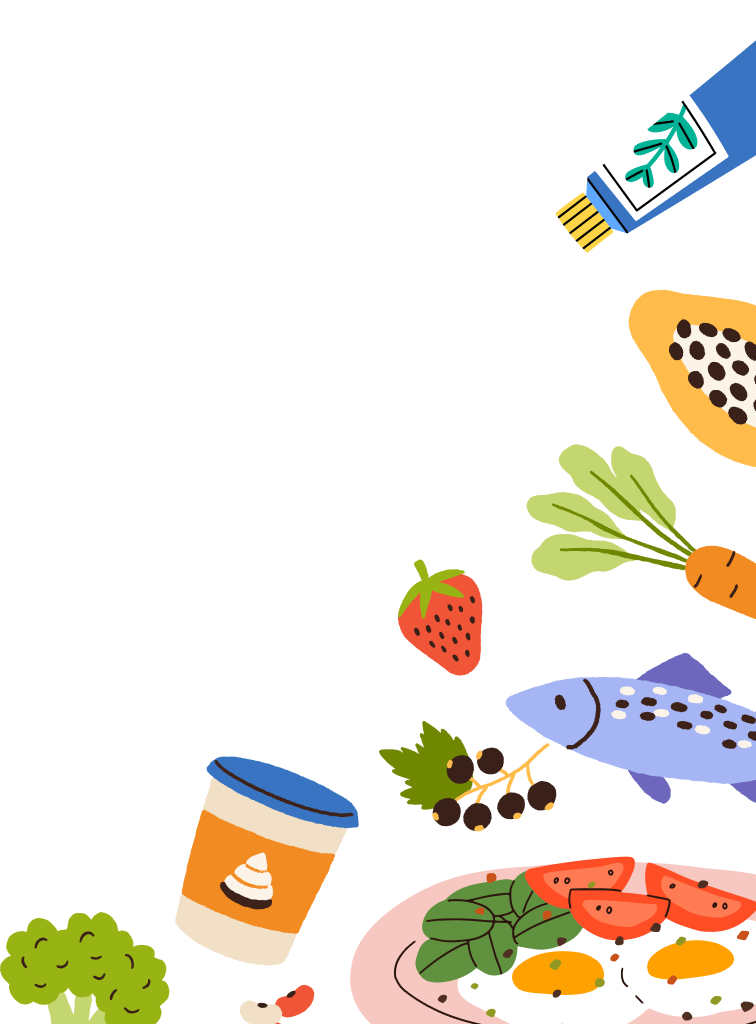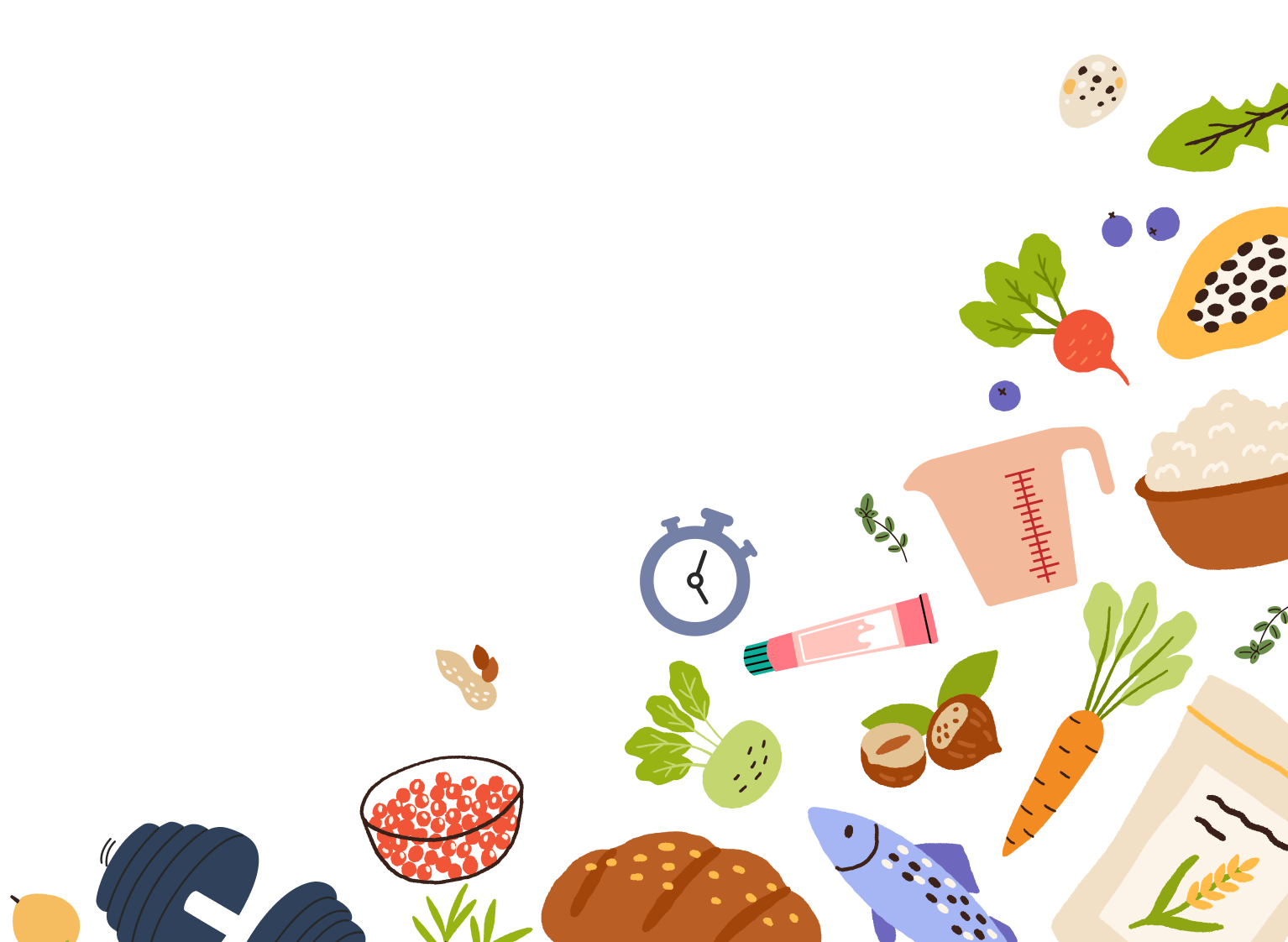Why Choose Non-Toxic Cookware and Kitchen Tools?
Health and wellness have long been defined as eating whole foods and exercising regularly, but in 2025, they are starting to incorporate much more. Unfortunately, we live in a world full of chemicals and microplastics, which can easily seep into our food during harvesting, storage, preparation, and reheating stages. Repeated and long-term exposure to chemicals and microplastics can have damaging effects.
The American Cancer Society has directly linked several lab-made chemicals (specifically perfluorooctanoic acid (PFOA)) that are used in non-stick cookware to an increased risk for testicular, kidney, and thyroid cancer. These chemicals used in non-stick cookware and plastic cookware do not break down easily in the body and are referred to as ‘forever chemicals’. This means they can build up over a lifetime and will not routinely be removed from the body. Switching to non-toxic kitchen cookware and tools may just reduce your microplastic exposure in the long run!
Creating a Healthier Home Environment: Reducing Exposure to Toxins
Making non-toxic swaps in the kitchen is a conscious and potentially pricey effort. However, it doesn’t have to be complicated. Perhaps the easiest way to reduce your exposure to carcinogenic (cancer-causing) chemicals and microplastics is to utilize stainless steel. This safe and durable kitchen essential is affordable, can withstand high heat, and is easy to clean. It is also non-porous and has no coating, meaning that switching from a non-stick pan to a stainless steel pan will reduce your exposure to PFOAs and other harmful chemicals. To make matters more confusing, there are varying levels of stainless steel, some of higher quality than others. When choosing a stainless-steel pan or bowl, all products will have a minimum of 16% chromium to ensure the material’s safety. Stainless steel is graded, with the lowest grade being 200 and the highest grade being 400.
According to Food & Wine, 300-series grade stainless steel is the most common type and would be an excellent choice when purchasing new cookware. More luxurious stainless steel cookware may feature copper or aluminum cores, both of which are good heat conductors, helping to cook food evenly. When in doubt, a 200 series grade stainless steel pan is still safer and healthier than a non-stick pan.
Wood Cutting Boards: Choosing and Maintaining a Safe Option
Unfortunately, plastic cutting boards are a popular staple in most households due to the ease of sanitizing, washing, and storing. Equally unfortunate, the use of plastic cutting boards over time can result in microplastics being accidentally added to our foods.
Consider switching to a wooden cutting board to eliminate this possibility. When looking at non-toxic cutting boards, a solid slab of wood is typically considered the safest option, as glues are not used in these. It may also be a good idea to explore wooden cutting boards that are not finished with mineral oil, such as those made of cypress or sapele wood, as single solid slabs (the end result is no glue and no mineral oil!). One downside to wood cutting boards is that they are not dishwasher-safe. You may also be concerned about the sanitation when preparing raw meats, poultry, or fish. You can still prepare these raw proteins on a wooden cutting board, but it's recommended to dedicate one board for protein and one for non-raw ingredients.
When it comes to maintaining and cleaning your wooden cutting boards, it is important to follow these specific instructions, as the little grooves and cuts made on the surface can trap some bad bacterial bugs: wash your cutting board after each use, disinfect every month or immediately after use if used for raw proteins, allow the board to air dry thoroughly (on both sides), and finally treat the wood cutting board with a mineral oil (or coconut oil) to keep the wood ‘conditioned’. Check out The Spruce for more tips and tricks for sanitizing and cleaning your wooden boards with lemon and vinegar.
Other Non-Toxic Kitchen Swaps: Beyond Cookware and Cutting Boards
Food storage is a major area of concern for those living a ‘non-tox’ life. Unfortunately, plastic food containers often contain bisphenol A (BPA) and phthalates, which are known endocrine disruptors that can leach into your food when it is heated. Endocrine disruptors can significantly impact our estrogen levels and dysregulate the ‘estrobolome’, a unique set of bacteria within the gut microbiome responsible for metabolizing estrogen. Using only glass or stainless steel Tupperware can eliminate this concern altogether! While BPA is not thought to be toxic unless heated (meaning you can still use plastic containers for cold items), it is still a chemical that can be easily eliminated from your home by reducing your plastic use.
As we dive deeper into all potential toxic products, we must also consider and evaluate the use of aluminum foil. Foil products are durable, affordable, and heat-resistant, but if misused, they can pose health risks. There are several tips and tricks for using foil correctly, according to Southern Living, including avoiding foil with acidic foods, as the ingredients can corrode the foil, which can then leach into the food and be ingested. A study published in the Food Science and Nutrition journal suggests that most foods can become contaminated when cooked with aluminum foil. The body can process trace amounts of aluminum, which is the most abundant neurotoxic metal on our planet. However, significant long-term exposure has been linked to Alzheimer’s disease according to the Journal of Alzheimer’s Disease.
Some non-toxic bloggers argue for the complete discontinuation of aluminum foil in the kitchen. However, if it is a staple in your household, consider using it only for cold storage and switching to a silicone mat for all baking needs. These non-toxic and reusable mats are versatile and may even improve the taste of your baked goods! When considering your options, check out the 10 best silicone mats, as recommended by Good Housekeeping.
Creating a Non-Toxic Kitchen: A Step-by-Step Approach
Creating a non-toxic kitchen can seem overwhelming. It is important to prioritize your swaps and focus on high-impact changes. It's easy to get bogged down by the details and feel like you must replace everything in your kitchen (and maybe even your household), but start with the most important things: eliminating plastic and non-stick cookware. This includes switching to glass Tupperware, wooden cutting boards, and stainless steel or cast-iron pans. Consider also replacing plastic and rubber utensils with wood or steel varieties.
The next easiest swap is removing fragrance from your cleaning supplies and soaps. Fragrance is a known endocrine disruptor, and be honest with yourself, there’s no reason our plates need to smell like lavender or coconut after a good rinse! These swaps don't have to break the bank. Good stainless steel pans can be found for less than $30, and wooden cutting boards are not typically expensive either, unless you opt for premium woods like maple, cherry, or walnut. ‘Cleaner’ products for washing dishes and countertops can be found at most grocery stores and are priced comparably to big brands such as Dawn. Take this one swap at a time, and remember why this process is important and a good investment for your overall health!
Resources and Further Reading: Expanding Your Knowledge
Looking for more details on how you can make healthy, non-toxic swaps in other areas of your life? Check out Sustainably Kind Living or A [Realistic] Guide For Swapping To Nontoxic Products In Your Home by Kate Eskura.
-
A [Realistic] Guide for Swapping To Nontoxic Products In Your Home. (2023, March 7). Kate Eskuri. https://thefoundationblog.com/blog/nontoxic-house
-
American Cancer Society. (2023, March 21). Perfluorooctanoic Acid (PFOA), Perfluorooctane Sulfonate (PFOS), and Related Chemicals. www.cancer.org. https://www.cancer.org/cancer/risk-prevention/chemicals/teflon-and-perfluorooctanoic-acid-pfoa.html
-
Dordevic, D., Buchtova, H., Jancikova, S., Macharackova, B., Jarosova, M., Vitez, T., & Kushkevych, I. (2019). Aluminum contamination of food during culinary preparation: Case study with aluminum foil and consumers’ preferences. Food Science & Nutrition, 7(10), 3349–3360. https://doi.org/10.1002/fsn3.1204
-
https://www.facebook.com/foodandwine. (2024). Don’t Buy a New Stainless Steel Cookware Set Without Reading This Guide First. Food & Wine. https://www.foodandwine.com/guide-to-stainless-steel-cookware-8558171
-
https://www.facebook.com/SouthernLiving. (2024). 9 Things You Should Never Do With Aluminum Foil. Southern Living. https://www.southernliving.com/things-you-should-never-do-with-aluminum-foil-8738890
-
Konstantina Antoniadou. (2024, February 3). 21 Easy Non-Toxic Swaps For Your Kitchen | 2025 Edition. Sustainably Kind Living. https://sustainablykindliving.com/best-non-toxic-swaps-kitchen/
-
Livermore, S., & O’Brien, M. (2019, July 3). 10 Best Silicone Baking Mats To Make Any Pan Nonstick. Good Housekeeping. https://www.goodhousekeeping.com/cooking-tools/g36418279/top-silicone-bake-mats/
-
Properly clean and care for wooden cutting boards with these tips. (n.d.). The Spruce. https://www.thespruce.com/clean-wooden-cutting-board-4772583
-
Tomljenovic, L. (2011). Aluminum and Alzheimer’s disease: after a century of controversy, is there a plausible link? Journal of Alzheimer’s Disease : JAD, 23(4), 567–598. https://doi.org/10.3233/JAD-2010-101494





















Comments
Join The Conversation...